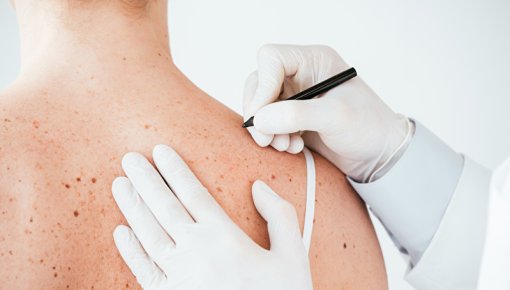How are moles and other nevi removed?

Moles and other types of nevus only rarely have to be removed for medical reasons. Some people want them removed for cosmetic reasons. A small surgical procedure is often all it takes.
Moles and other nevi may stand out. Some people see them as an attractive special feature and like their “beauty spots.” Others find them bothersome or have a raised nevus in an inconvenient place where it can easily be scraped open, for instance. You can then have it removed. Purely cosmetic procedures usually have to be paid for out of your own pocket.
If doctors notice certain concerning changes in moles or other nevi, they are always removed. Because the reason for this treatment is suspected skin cancer, the costs are covered by your health insurance.
